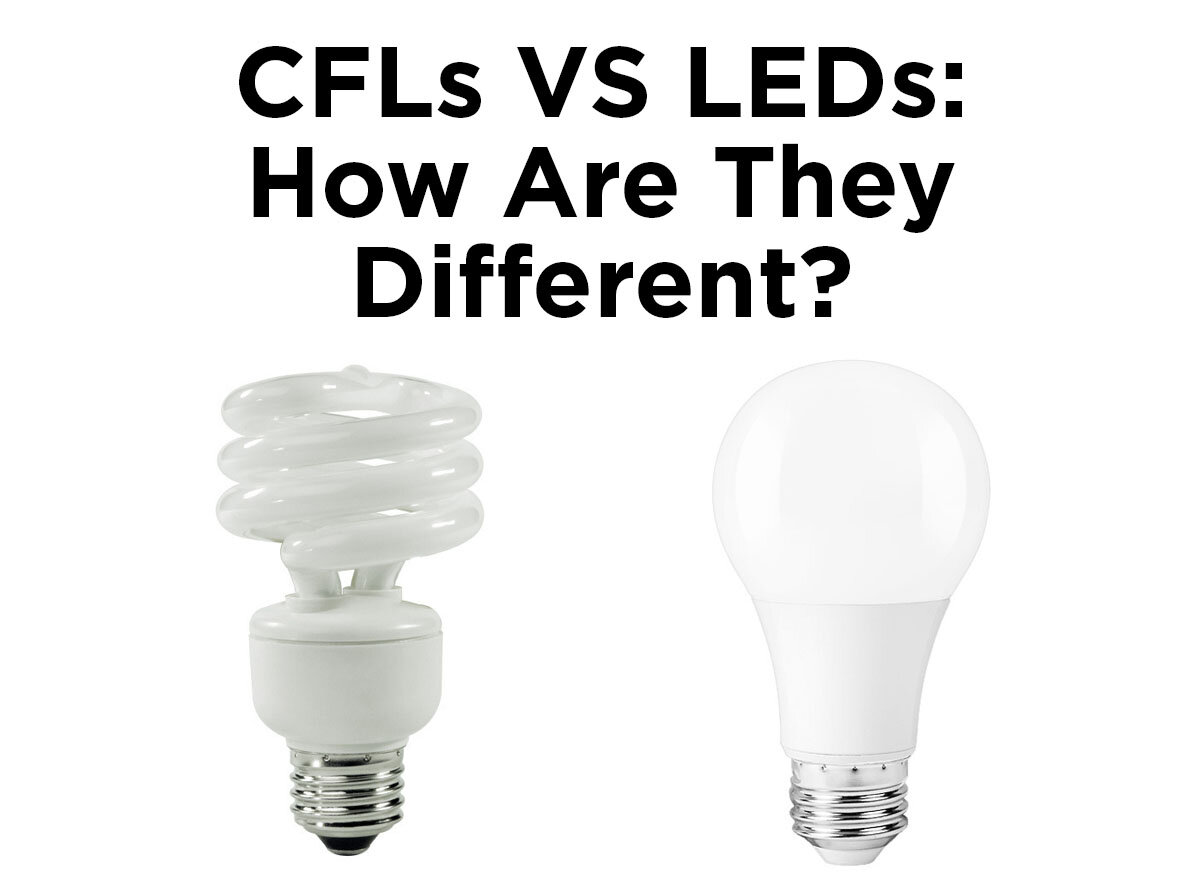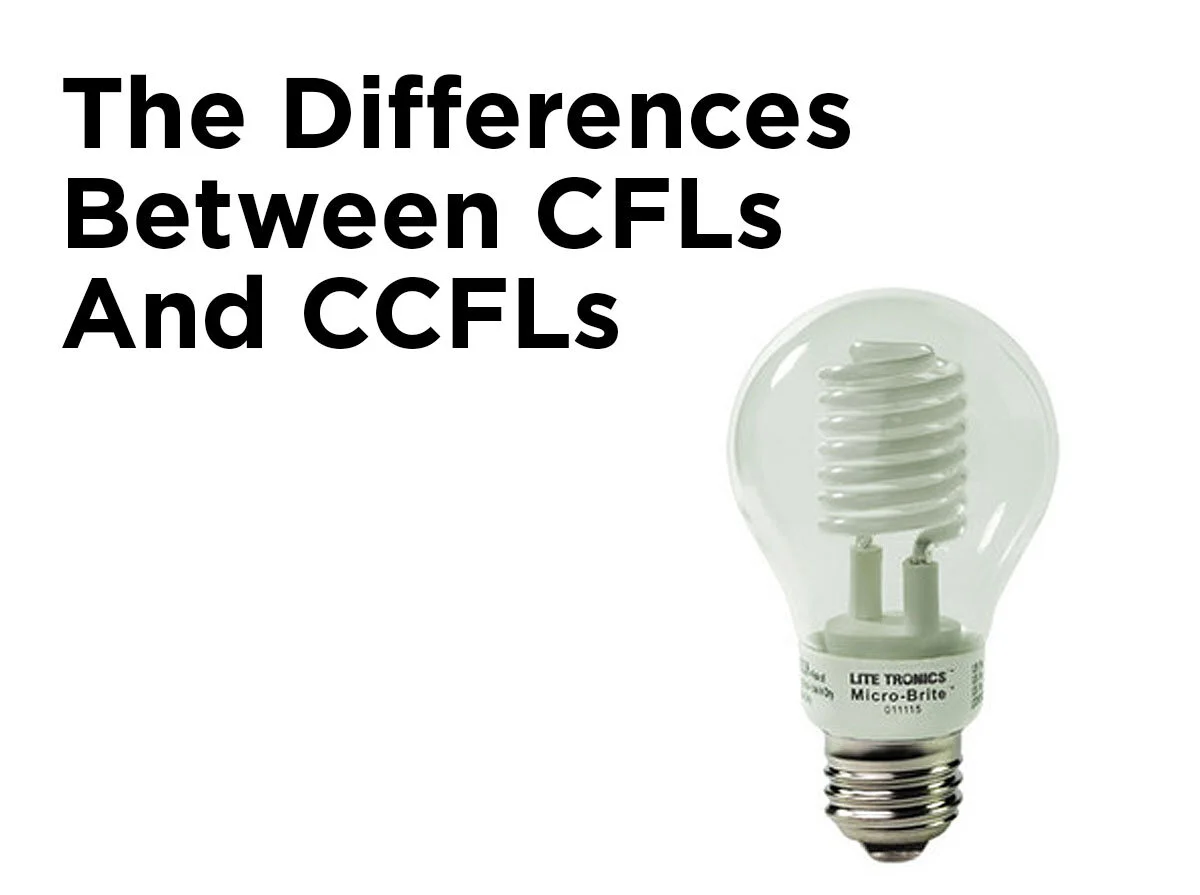CFLs vs. LEDs: How Are They Different?
Now that household incandescent bulbs are slowly but surely becoming a thing of the past due to government efficiency standards, many people are being pointed in the direction of compact fluorescent lamps (CFLs) and LEDs as replacements. But you may not know what makes these two incandescent alternatives different from one another, beyond their appearance and pricing. When it comes to CFLs and LEDs, there have a lot more differences than what meets the eye.
Energy Efficiency: While both CFLs and LEDs fall well within the government guidelines of light bulb efficiency, they are not on a level playing field in terms of energy consumption. While a 60-watt equal CFL typically consumes about 13 watts of energy, a 60-watt equal LED will only consume about 8.5 watts. LEDs also produce more lumens per watt than CFLs. Even though they both conserve a considerable amount of energy compared to incandescents, this discrepancy in energy savings, among many other things, is why LEDs are being praised as the ultimate in efficient lighting.
Mercury: As you may already know, CFLs contain a small amount of mercury whereas LEDs do not. This mercury doesn’t necessarily make CFLs more dangerous, considering you’d be able to find more of it in a tuna sandwich, but it does mean you should exercise caution if one breaks. Here’s what to do if you break a CFL bulb.
Life Hours: If you’re trying to make the choice between CFLs and LEDs, you should know the typical life expectancy of each. Bulbs with long rated lives are less likely to need frequent replacement and will drastically reduce maintenance costs. Incandescent bulbs are known to have a short life expectancy of around 1,000 hours. Even though CFLs can last anywhere between 6,000 and 20,000 hours, LEDs are capable of lasting up to 50,000 hours.
Light Directionality: LEDs and CFLs are made to emit light in very different ways. While CFLs are omnidirectional, meaning they emit light in all directions, LEDs emit light in one general direction. The directional beam of an LED can be ideal for applications where focused lighting is needed, such as track or display lighting. However, LEDs can be made omnidirectional using lenses like on standard A19 LEDs.
Durability: We all know that incandescent bulbs have a very fragile filament that is prone to breakage if the bulb isn’t handled with care. CFLs and LEDs don’t use a standard filament, but still vary in their ability to withstand certain conditions, like areas that experience frequent vibrations or jolting. CFLs are considered to be more fragile than LED lighting because very strong vibrations can weaken the electrodes that the lamp uses to produce light. Also, CFLs are mostly constructed of glass and are much more likely to be easily damaged. LEDs are a lot tougher and can withstand rough handling.
Temperature Compatibility: Before making the choice between CFL and LED, you should also think about the temperature of the area in which you are planning to use them. If you’re looking for a light that will do well in cold temperatures, LEDs are the way to go. Conversely, CFLs don’t operate well in freezing temps but do much better in moderate to hot conditions.
On/Off Frequency: CFLs and LEDs also have different reactions to being frequently turned on and off. If you constantly turn a CFL on and off, its rated life is very likely to decrease. However, the rated lives of LEDs aren’t affected by frequent on and off cycling.
Heat Emission: All light sources emit some kind of heat – even LEDs. But the amount of heat CFLs and LEDs produce is drastically different. In LEDs heat is generated in the rear of the lamp where heat sinks minimize its production. Whereas LEDs don’t produce Infrared (IR) or Ultraviolet (UV) radiation, CFLs produce both and can become very hot to the touch if left on for an extended period of time.
Dimming Capabilities: If you like having the ability to customize your lighting scheme, you’ll want to think about the dimming capabilities of your lights. CFLs and LEDs are more difficult to dim than incandescent bulbs due to the lack of a filament that generates light. Even though dimmable CFLs and LEDs do exist, they both need specialized dimmer switches in order for them to dim properly. In terms of which lights are easier to control on dimmers, LEDs beat out CFLs by a nose.
Start Times: As we've already discussed, LEDs and CFLs create light in very different ways. Their difference in technology is why one takes longer to produce visible light than the other. Even though CFLs are technically instant-on, they have to go through a few steps before the light it produces can become visible, usually taking around 60 seconds to reach full brightness. Some LEDs have a minuscule delay of about 1 second, but there is no delay in reaching full brightness and may be a better choice if you've gotten used to the instant-on of incandescent bulbs.
Did we miss anything? Do you have any more questions about energy-efficient lighting options? Let us know in the comments or chat with us on Facebook, Twitter, LinkedIn, or Pinterest!








